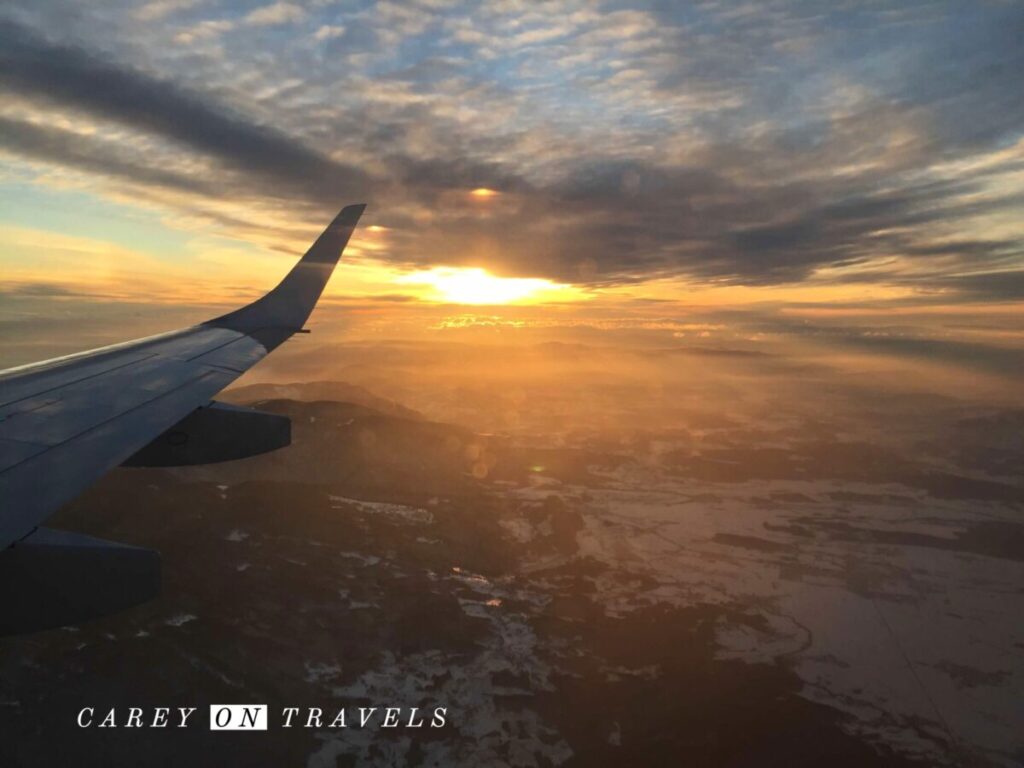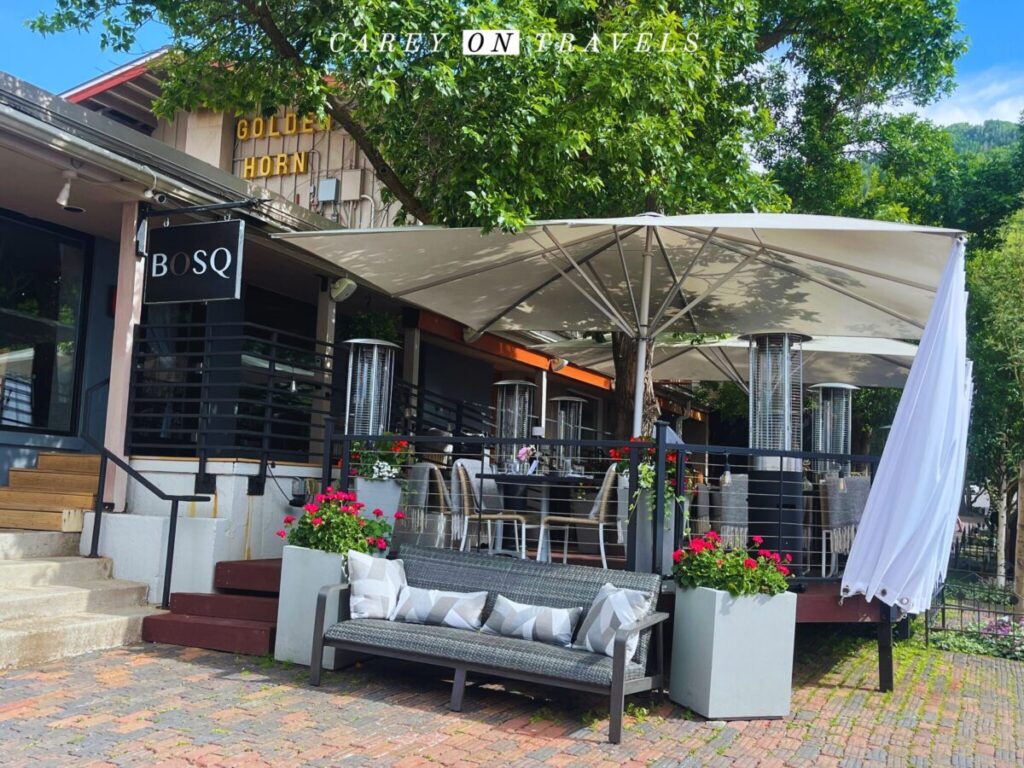Planning a trip is exciting, but managing finances can be a bit daunting. How do you estimate the cost of a trip? There are many trip apps out there that do a great job with tracking your costs while on holiday, and even in comparing these to your trip budget. How can you take the stress out of creating your initial travel budget? A well-structured budget can make all the difference, allowing you to enjoy your adventure without financial stress. Here’s a straightforward guide to how to calculate a manageable trip budget in 5 easy steps. As a bonus, we’re including a free download to our Google Sheets Travel Itinerary and Budget template!
Download our free CareyOnTravels Travel Budget Planner template here!
This post may contain affiliate links. If you make a purchase through these links, we will earn a small commission at no additional cost to you. We recommend products we have personally used or verified. Read the full disclosure here.
If you don’t have time to read this now, pin it for later!

5 Steps to Calculate Your Trip Budget
The first step is to sketch out your high level itinerary. Whether you are planning a cruise, a trip through Europe’s top cities, or exploring off the beaten path in Asia, you’ll need somewhere to track your itinerary. We use our customized Travel Budget Planner template based in Google Sheets (download on our freebies page) for these initial planning stages. In this template, you’ll find both an itinerary and a budget tab. They are linked together; start with the itinerary tab for best results.
Tripit can be a useful itinerary planning app, particularly once the travel is booked, as it consolidates all confirmations.

Step 1: Estimate Your Major Expenses
Transportation
Begin to calculate your trip budget by researching your transportation options to reach your destination. These typically represent a large portion of trip costs, so it is worth spending a good amount of time narrowing down your trip transportation options and costs. Rome2Rio provides a quick view of the best ways to get from point A to point B. Once you have that information, search for the costs for the following areas:
- Flights: Research flights for all legs of your trip, using apps like Skyscanner, Google Flights, or Kayak to compare prices and find the best deals. Unless you are booking right away, be sure to leave yourself some buffer (typically we include 10-20% buffer in our budget).
- Trains: Search for your train costs using apps such as Trainline, as well as local train sites to find the best price. In some cases, there are fixed prices (e.g., for the metro), while others may fluctuate. Again, consider including a bigger of 10-20% if prices may fluctuate.
- Buses: Search for bus routes and prices using Flixbus, Busbud, or other local bus apps, depending on your destination. Add a buffer unless you are booking right away.
- Rental Cars: Rental costs can vary widely. As long as there is free cancellation, we reserve these well in advance to lock in the best price. We use and recommend Discovercars for our car rental bookings. It is easy to search and compare rental options, with good transparency about additional costs and insurance requirements. If you’ve reserved a car, include that fixed price, including all taxes and fees. Keep in mind that, in some countries and for some rental agencies, they do require an upfront and refundable security deposit, in case of damages. Be sure to plan accordingly, to ensure there is available credit on your credit card at check-in.
Pro tip: If you are traveling with your dog or other pet, be sure to factor in the associated travel costs.

Accommodations
Check out platforms like Booking.com, VRBO.com, and Hostelworld.com to gauge the price range in your destination. Remember to factor in the length of your stay, correct number of people, and all taxes and fees to get your comprehensive cost. Many sites do not show all taxes and fees until you get to the final page of the booking process (before you enter credit card information). For hotels in particular, including a buffer of 10-20% is good practice, unless you have reserved the properties.

Activities and Entrance Fees
If you already know which activities you’d like to do, calculate your trip budget by looking up the costs of the tour, museum, or other activity. Be sure to include taxes and fees when compiling your total. Add a buffer to your total, since your plans may change.
What if you don’t know exactly what you’d like to do yet? For many locations, Getyourguide.com and Viator.com can be great sources of inspiration. And, they can give you a good idea of what typical activities may cost. If you are unsure which activities you’ll do, come up with an average cost per day based on the activities you are seeing, and add a bigger buffer to this (perhaps 25-50%). Not all locations are covered on these activity and tour sites though. If you plan a trip to a theme park, for example, it may be easiest just to check the park’s website directly to calculate what your costs will be.
You can continue to refine your activities budget as you work out all of the details of your trip.

Step 2: Daily Expenses
Food and Drink: Estimate your daily meal costs, deciding also how many meals a day you’ll eat out on average. Apps like Yelp and Zomato offer menus and pricing, helping you set a realistic daily food budget.

Local Transportation: Consider how you’ll move around locally. If you are using a rental car, estimate your gas costs and parking fees. The Rome2Rio app, or apps like Uber or local public transport apps, can give you a good sense of what you’ll spend on day-to-day travel. This is an area you will likely want to add some buffer to. Don’t forget to consider local bike rental or scooter rental fees. There are local apps in many cities to reserve these, where you can find hourly or daily pricing as well. Bikesbooking.com is another great site to find bike rentals at your destination, especially if you are visiting cities.

Step 3: Miscellaneous and Emergency Funds
Always set aside a portion of your budget for miscellaneous expenses like souvenirs or unplanned outings. This could be deciding to take a gondola or chairlift down from a mountain hike due to weather. Or, it could be going skiing because there is incredible early season snow that you hadn’t planned for. Or, perhaps you hear about a great concert while in town?
It’s also wise to have an emergency fund, just in case. If you do not plan to purchase travel insurance, be sure that you have a higher emergency fund than if plan to buy insurance. For reference, a 2024 trip to the emergency room in the Canary Islands without insurance cost would have cost 250 Euros. If you had to add imaging, surgery, or an evacuation, this number increases exponentially (and rapidly). An emergency room visit and surgery in the United States (appendicitis) would have cost US$63,000 without insurance. We recommend and use Squaremouth to buy our travel insurance, as you can pick and choose from various travel insurance plans depending on the features that are most important to you. Travel insurance is especially important for those with pre-existing conditions.
Click here to get a free quote on travel insurance here: Squaremouth

Step 4: Consolidate your Planned Costs
Now that you have all your information, it’s time to organize it. There are quite a few apps to track trip budgets, such as Trabee Pocket, TravelSpend, and SplitWise. In our opinion, tracking travel expenses is the strength of most of these apps. vs planning the budget itself. If you have an app that has worked well to organize trip itinerary and budgets during planning, please share this in the comments below. We’re always open to testing new apps.
This is where Google Sheets comes in. There is a built-in trip budget template and a trip itinerary template that anyone with Google Sheets can use. We found these to be lacking some needed details, and they are not linked together. We created a customized version for our own use, and are giving this Budget Planning Template away for free. This includes both a budget sheet and an itinerary sheet, allowing you to easily calculate your trip budget.
Download our free CareyOnTravels Travel Budget Planner template here!
Simply follow the included set of instructions, adding in your estimated costs by category, selecting the total column to see your budget total. If you have already filled in the Itinerary tab, the expense details and category will be pulled in automatically. You can always manually enter this information if you prefer.

Step 5: Adjust as Necessary
As you input your actual expenses, you might notice that your trip costs more or less than planned. If you are going over budget, use this opportunity to adjust your plans. Do you need to reduce the number of days of your trip? Or, stay at a slightly lower cost accommodation to be able to afford all of the activities you’d like? Can you bring your flight costs down by flying into another airport? Consider how to adapt this to make the trip work within your available funds.
If traveling as a group, share your copy of the Google sheets file with the other travelers to easily agree on itinerary and budget options.

Tracking Actual Costs During Your Trip
There are quite a few free trip budget apps on the market that track expenses during your trip. Of the ones that we have tested, Trabee Pocket has been the easiest to work with for individual and family trips. SplitWise has been our favorite for group trips, where people need to split costs. We’ll do a full assessment of budget tracking apps in another post.

Reviewing and Adjusting
During your trip, review how you are doing against your budget. If you find yourself going over budget on miscellaneous or daily expenses, proactively look at how you can reduce them for the remainder of the trip. Reviewing your final budget vs actual costs can provide valuable insights for planning future trips, showing you where you saved money or perhaps spent more than expected.
Final Thoughts
Budgeting for a trip does take time to plan. That said, it doesn’t need to be complicated. Take advantage of useful apps and Google Spreadsheets to calculate a trip budget that is clear and manageable. Happy travels!
If you liked this post, pin it for later!

Travel Resources
We recommend booking through our preferred travel booking sites below.
| Air Travel | SkyScanner |
| Lodging | Booking.com, VRBO.com, Expedia.com, Hostelworld |
| Tours and Activities | Viator.com, GetYourGuide.com, TakeWalks.com |
| Car rentals | Discovercars.com |
| Travel insurance | Squaremouth |
| Bike and scooter rentals | BikeBookings.com |
| Train tickets | Trainline, RailEurope |
| Bus tickets | Flixbus, Busbud |





A clear and concise post that simplifies budgeting in a smart and engaging way! The step-by-step format is easy to follow, making it both practical and enjoyable to read. Well done!
This blog outlines five easy steps to calculate your trip budget, covering transportation, accommodations, activities, and daily expenses. It also includes a free downloadable budget planner to simplify your planning.
[…] these average budget daily costs when budgeting for your travel (per […]
I love this trip budget planning spreadsheet!! Brilliant! I’m excited to use this on my next trip. Thanks so much!
Great! Let me know if you have any feedback, we’re always looking to improve it.
This is definitely great advice, I’m terrible at budgeting for travel 🥲 I really should give one of these apps a go soon
This great! I always seem to be going over budget and this could help me create a buffer that I never remember to create!
Thanks, hope this can help!
Great tips for budgeting for my next trip, thanks!
Thanks for these great tips, I’m a budgeter until I get into the YOLO vibe and everything is out of the window, lol, and I get back home trying to readjust my living expenses because I overdid. I’m still learning
Good to have a budget to start. I try to include buffer for just that reason. Maybe just try to see how much your YOLO puts you over budget and factor that into future vacation budgets as a buffer?
Great tips! Although I don’t tend to plan my daily itinerary ahead of time, I like to plan everything before my trips. So, I use Tripit and check accommodation platforms to ensure I always get the best deal possible.
I often will plan the big ticket items ahead of time. Then, I include the bigger activities I know I’ll be paying for, even if the days change around. I’m less worried about the timeline once I’m there, but do try to capture the costs. Some people prefer a very detailed itinerary for each day.
Great post. I’m always good at setting a budget but not always good at following it! A plan and your free tool should help me stay on track!
I think there should always be flexibility to try different things that you stumble across. I try to make a budget based on some initial assumptions–then, change it as I go but trying to stay within the overall budget.
Ah, budgeting for travel! I’m terrible at this. Your five points make it sound way less scary. Thanks for sharing these. I would say I’m only good at finding a place to stay. I always make sure that it has a kitchen so I can keep meal costs lower.
Having a kitchen makes things so much easier. In addition to budget, I prefer to make my own breakfasts and some dinners.
These are all great steps to take when planning and budgeting a trip. I love to compare costs across websites and make sure to set aside money for any miscellaneous expenses, you never know what could happen!
Very true, there are always variables you can’t predict. Usually the buffer I include covers those.
What a great resource! It’s hard to tell people how much to budget because so much of it is travel style, so to be able to customize your own budget is important! Great tips.
Thanks!
So many helpful tips – thanks for sharing! I should check out the apps Yelp and Zomato, cause food is often one of my major expenses (after the accommodation & transport, of course)
Food is so hard to predict when traveling. Zomato is one of my favorites especially when in Europe.
Google sheets is definitely a helpful tool to keep track of expenses, especially when you need to split costs with another! Thanks for the helpful tips 🙂
Thanks, Splitwise is a nice free app to split expenses too if you are just looking for expense tracking.
Very good post! Nothing better than going on a trip knowing it’s all already paid/ accounted for. Always plan for more… I tend to book cheaper accommodations first, and if I find more in my account, I upgrade.
That’s a great approach!
Wonderful advice for budgeting travel. Lots of good tips that will help anybody travelling, on a budget or not.
Thanks!
Great tips and resource for people. As an accountant I always have a budget for our trips.
Thanks for the feedback!
Honestly, people say “just pack your bags and go” – I am like, oh ya, who will give the money. Trip budgeting is one underrated phenomena – And this article is what everyone needs to read. Saving this.
Thanks for the feedback!
Thanks for the tips on how to budget for trips!
Great tips. You do need to ensure you have an idea of all costs cause there is nothing worse than having to come home early because you didn’t budget properly.
Agreed, no one wants to cut short a vacation!
What a decent research! Thanks for sharing your thoughts on it!
Thanks for the feedback!
I never budget for activities hahah. I usually do accommodation and then amenities and food together, or if I haven’t paid for accommodation in advance, I just have a budget for everything other than my ticked. So far it has worked but I should probably try to get more structure.
If what you’re doing works for you, that’s great!
I love all of your tips, thanks for the post! You’ve got great suggestions of the best sites to use to craft a budget and get a realistic idea of the costs and how to track them.
Thanks for the feedback!
Might sound sad but I love budgeting!
I like to know what I’m going to spend on a trip, so me too!
Very helpful post! I use a google sheet to keep track of all my trip costs and it makes a big difference. Costs can add up fast!
Thanks! I keep trying to find apps that will replace this, but haven’t found one yet.
[…] Deciding whether to rent a car in Sicily involves weighing the freedom of exploring against the challenges of local driving. Having a car allows you to set your own itinerary and take spontaneous detours, which often result in some of the most memorable experiences. Be sure to also review whether a rental car fits within your travel budget. […]
[…] help you to have a safe, enjoyable, and memorable journey! Don’t forget also to complete your travel budget planning in advance of your trip, and track costs as you […]
[…] ago18 comments Share this article FacebookXRedditPinterestEmail Previous article How to Calculate Your Trip Budget in 5 Easy Steps Next article Top 10 Tips for Your Solo Road Trip Home » Blog » Language learning » 1 […]